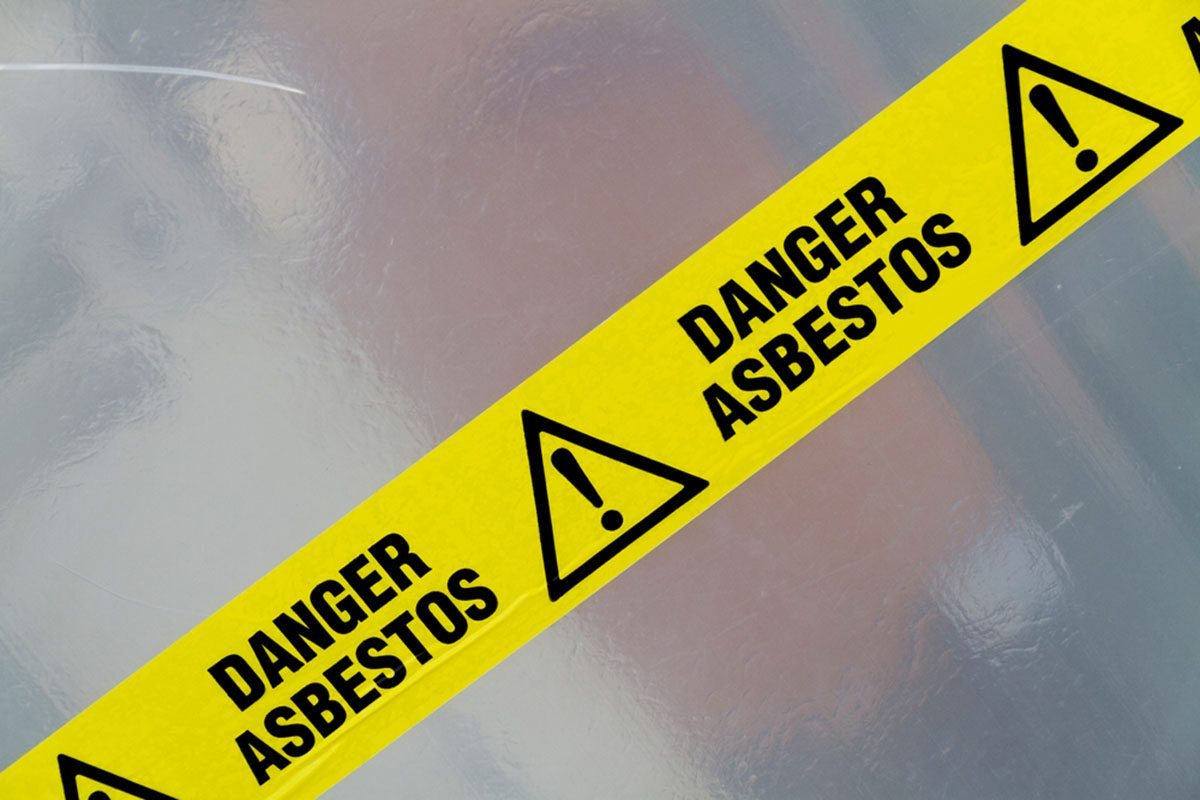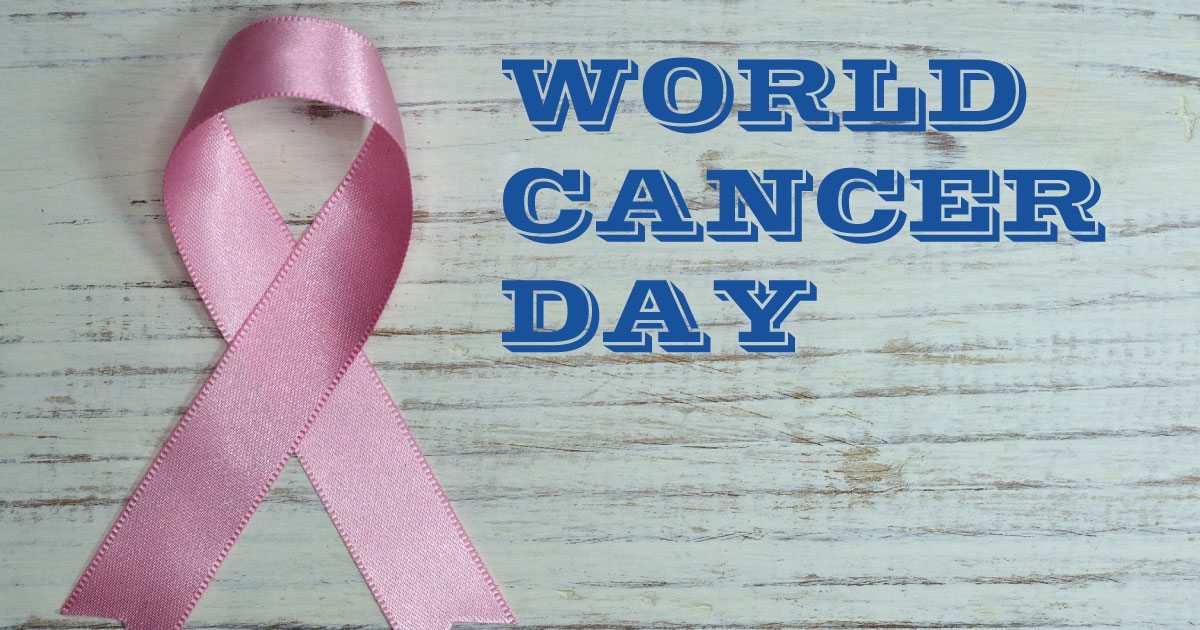Mesothelioma Help Cancer News

The Dangers of Asbestos
by Ashley Barasa
Asbestos has been making an appearance in the media lately, with legal companies advertising the dangers related to asbestos exposure and how potential clients out there in the workforce have been wrongfully endangered. The only problem with this new emphasis to asbestos in the media is that it raises more questions than answers, and as someone who is not in the manual labor field, I assumed that this asbestos information did not apply to me. I was so wrong. There are so many people out there- myself previously included- who don’t know just how much asbestos is really used in America today, the dangerous consequences of using asbestos, or the smokescreens that major corporations have tried to create in order to save profits. Many people don’t even know what asbestos is. My intentions with this paper are to shed some light on a subject that we as a population should all be more aware of.
So what exactly is asbestos? Asbestos is actually a broad term, and it is used to describe six naturally occurring silicate minerals that are fibrous in their structure, and are more fire-resistant and acid-resistant than most other materials. This resistance is what makes them so appealing. In fact, they are also resistant to applied pressure, because when forces are applied to asbestos, their fibers just break up into smaller fibers, and this continues on to a microscopic scale. Because asbestos is so durable and resistant to high temperatures and stress, it is ideal for industrial products. It is often used for insulation, roofing shingles, automotive parts, cement mixtures, and numerous other industrial type products. It is sometimes even used in textiles.
Unfortunately, what makes asbestos so appealing- its properties and chemical structure- is also what makes it so deadly. Remember how when pressure or stress is applied to asbestos, it just fragments all the way down to microscopic fibers? Well these microscopic fibers then go airborne and people exposed to asbestos breathe them in. Due to the microscopic fibers’ small size, the human immune system has a difficult time detecting them, and from here, the lung problems develop into major health issues. Some of these health issues and diseases obtained from asbestos exposure are asbestosis, which is the scarring of the lungs and decreased respiratory function, lung cancer, and mesothelioma, which is a cancer of the tissue that surrounds the lungs, heart, or abdominal cavities. Even worse, it takes a considerably long time before any diseases from asbestos exposure manifest themselves. It takes approximately 15 years for asbestosis or lung cancer to show, and 30 years for mesothelioma. Keep in mind that the clock starts after just one occupational exposure to asbestos.
Asbestos has been used for millennia, going all the way back to ancient Greco-Roman times. It was noted even back then for its durability and dangerous health effects, for the Greeks had named this material “inextinguishable” and the Romans wrote how the slaves who worked with the asbestos suffered from “sickness of the lungs”. However, the Greek and Roman authoritative figures were so impressed by the properties of asbestos that they ignored the dangerous side effects. Unfortunately, today much of that same behavior is still being exhibited. Likewise, any discoveries of the correlation between asbestos and poor health are more like re-discoveries that we are barely starting to pay attention to.
Continuing on into asbestos’ history, during the Middle Ages and for a considerable time after that, the use of asbestos was in decline. It did, however, make its appearance in the 1700s and became incredibly popular during the Industrial Revolution of the 1800s. During this time, asbestos was used for lining steam pipes, turbines, boilers, ovens and other equipment exposed to high temperatures. With such a high demand, many cities throughout the United States became mining cities for asbestos or manufacturing sites for asbestos-containing products. The first major production site for the U.S. began in 1894 in Georgia. From this point on, asbestos mining and manufacturing cities continued to pop up throughout the country for the next 100 years. Production of asbestos in the U.S. was at its peak in 1970s, but even then, our consumption far outweighed our production. For instance, in 1973, the absolute pinnacle in U.S. asbestos production, the country consumed approximately 803,000 metric tons of asbestos, of which 718,000 tons had been imported from other countries (ProQuest Discovery Guides; Asbestos in the United States: Occurrences, Use, and Control, 2008).
It wasn’t until the beginning years of the 1900s that people began to take notice that workers who had been exposed to asbestos were dying unnaturally young. There were also an unusually large number of deaths and lung problems in the towns that mined asbestos. Around this same time, in 1924 to be precise, England was conducting research on the relation between lung diseases and asbestos. They came to conclude that asbestos was the cause for their workers’ early deaths and so, in the 1930s, England passed laws that ordered for more ventilation and that declared asbestos exposure responsible for work-related diseases. The United States would not come to these conclusions for another ten years.
Consequently, medical journals everywhere in the 1930s published research articles linking asbestos to lung cancer, but regrettably this critical information was eclipsed when the discovery of silicosis came out. Silicosis is a lung disease caused by the inhalation of silica dust and when the exposed workforces found out, employees collectively sued their employers for more than $300 million. This served as a major revelation for employers exposing their workers to asbestos, but instead of coming clean, they hid the dangers related to asbestos exposure. They continue allowing asbestos in the work environment despite the advent of alternatives such as man-made fiberglass. Their workers were unaware of the dangers they were being exposed to on a daily basis.
It wasn’t until the 1970s that people began to heed the warnings concerning asbestos. In 1986, progress was finally made when the Asbestos Hazard Emergency Response Act (AHERA) became law, requiring all schools to inspect their buildings for asbestos and make the necessary abatements and repairs. It also made it mandatory for asbestos control professionals to take proper initial training, with training once every year afterwards. Then in 1989, the U.S. EPA banned most asbestos containing products, but this ban was overturned by the 5th circuit court of appeals in 1991. However, even with the overturning, some things remain banned, such as flooring felt, specialty paper, and anything that did not historically contain asbestos. Finally, in 1993, the last asbestos mine in the country was shutdown.
In more recent years, the “Ban Asbestos in America Act of 2007” bill was introduced into congress in March of 2007. This bill specifically prohibits the manufacturing, importing, processing and distribution of any products containing asbestos, and it also redefines asbestos so that it includes more than 6 silicate minerals. This bill was unanimously passed by the senate in October of 2007, but once it reached the House of Representatives, it lost momentum. The only action the House has taken in regards to this bill was a hearing by a subcommittee in early 2008.
Would you expect that U.S. products containing asbestos is a rare occurrence? Well, think again. Not only is asbestos still being used, but it’s being incorporated into common everyday household products and even toys. You might see it today listed under the label of Chrysotile Mineral Fiber. Chrysotile is one of the 6 types of naturally occurring silicate minerals that asbestos is used to describe, as mentioned earlier (ProQuest Discovery Guides; Asbestos in the United States: Occurrences, Use, and Control, 2008).
If that’s not scary enough, every year, there are on average 10000 people in the U.S. that die from asbestos related conditions, and there are 3000 people that are diagnosed with mesothelioma. That rate of 3000 people being diagnosed every year has been the same rate for the last 30 years (Surveillance Epidemiology and End Results (SEER) Program at the National Cancer Institute, 2013), meaning that despite advantages in treatments, there has been no decrease in its occurrence. Additionally, there is still no cure for mesothelioma, and any improvements in the survival rates of people diagnosed with mesothelioma is most often attributed to the person’s age and how early they were diagnosed.
The rate of asbestos consumption in America has dropped from its peak of 803,000 tons in 1973 to 1,180 tons in 2011, but this number is much too high. There are more than 40 countries worldwide that have recognized how deadly asbestos is and have completely banned its usage, making the U.S. one of the only industrialized countries that has not followed this trend. Not only that, but using asbestos effects all of us in the sense that it takes a toll on taxpayers’ dollars. The cost for removing asbestos from schools, offices buildings, and stores runs in the millions of dollars. We need to come together to put a stop to asbestos in our country.

ASCO Offers Malignant Pleural Mesothelioma Treatment Guidelines
The American Society of Clinical Oncology (ASCO) is the world’s leading professional organization for medical professionals caring for cancer patients. The Society has a goal to improve the quality of care in the field of oncology. Now, to assist medical professionals managing patients with malignant pleural mesothelioma, the organization has just released new evidence-based recommendations.
In their newly released clinical practice guidelines, ASCO offers guidelines for diagnosis, staging, chemotherapy, surgical cytoreduction, radiation therapy, and multimodality therapy in malignant pleural mesothelioma (MPM) patients. According to the panel of experts, including Hedy L. Kindler, MD, of the University of Chicago, and Mary Hesdorffer, formerly the Executive Director of the Mesothelioma Applied Research Foundation, the recommendation addresses five “overarching clinical questions.”
- What is the optimal approach to obtain an accurate diagnosis of mesothelioma?
- What initial assessment is recommended before initiating any therapy for mesothelioma?
- What is the appropriate first- and second-line systemic treatment of patients with mesothelioma?
- What is the appropriate role of surgical cytoreduction in the management of mesothelioma?
- When should radiation be recommended for mesothelioma?
Pleural mesothelioma is a rare, painful cancer caused by exposure to airborne asbestos fibers. Treatments manage the symptoms to hold the cancer at bay, but there is no known cure for this deadly disease. Patients have a poor prognosis, and the median overall survival of patients with advanced surgically unresectable disease is about 12 months, according to ASCO. About 3,000 new cases are diagnosed each year in the U.S.
The ASCO team noted that “Given the rarity of this malignancy, there have been few large randomized trials, especially for surgical management of this disease.” Seeing a critical need to find and compile this information, ASCO convened a panel of experts, including thoracic, oncology and advocacy experts, to review medical literature published from 1990 through 2017 that included references to pertinent trials and studies.
Through the search of the literature, the team identified 222 relevant studies. After assessing the key areas of interest, including survival and quality of life, using evidence and informal consensus the team developed the evidence-based guideline recommendations.
The guidelines, published in the Journal of Clinical Oncology, include offering chemotherapy as a means for improving survival and quality of life for mesothelioma patients. The recommended first-line chemotherapy is pemetrexed plus platinum. However, the team recommends offering patients the option of enrolling in a clinical trial. Other chemotherapy recommendations include the addition of bevacizumab to pemetrexed-based chemotherapy for select patients, as well as pointing out risks for the use in some patients.
The panel “strongly recommends” a maximal surgical cytoreduction surgery for certain patients with early-stage disease. The recommendations note, however, that surgery is just one modality and chemotherapy and/or radiation should also be administered.
See the Journal of Clinical Oncology for all of the mesothelioma recommendations.
ASCO states that “clinical practice guidelines are intended to improve the quality of cancer care by helping oncologists make choices about treatment, prevention, supportive care, or follow-up in line with the best available evidence from oncology research.” ASCO notes that the guidelines are voluntary and do not account for variation among patients or the most recent evidence.
Sources:
- ASCO
https://www.asco.org/practice-guidelines/quality-guidelines/guidelines/thoracic-cancer#/29376 - Journal of Clinical Oncology
http://jco.ascopubs.org/content/early/2012/12/13/JCO.2012.44.6443.abstract

Mesothelioma Patients and Their Families Urged to Get the Flu Shot
The flu season is estimated to run from December through March annually, although you can get the flu at any time of the year. This year the flu is particularly serious, with the Centers for Disease Control and Prevention (CDC) announcing on January 26 that the flu activity has not yet peaked for the season.
The flu can be a serious condition for anybody: patients and family members of all ages, from the very young to the very old. The very young and the elderly are particularly at risk for the severe symptoms that the flu can cause. Patients with mesothelioma are on average around 72-years-old making them in the vulnerable group for this potentially serious condition. This year the flu has affected people in the continental United States and Puerto Rico.
The flu vaccine is recommended for most people. If you have not received it, talk to your medical team about getting it immediately. You can develop the flu even after getting the flu shot, but the course of the virus is usually less severe.
The flu is a virus that is contagious. Someone with the flu virus can infect other people beginning one day before symptoms develop, and five to seven days after becoming sick. Children can pass the virus for longer than seven days. Symptoms start one to four days after the virus enters the body. The flu can be passed on before you know you are sick and after the virus enters the body.
People with the flu can spread it to others from as far as six feet away. It is thought to be spread primarily by droplets from people with the flu when they sneeze, cough or talk. The droplets are then inhaled by people nearby into their lungs. The symptoms can come on quickly. The flu has a variety of symptoms. Some of the symptoms include high fever, respiratory illness, chills, severe aches in muscles and joints, pain and tiredness around your eyes, weakness or extreme fatigue, warm flushed skin and red watery eyes, headache, a dry cough, sore throat and runny nose. The treatment for the flu is to drink plenty of fluids, rest, and stay away from people so as not to spread the virus.
The flu can produce serious symptoms for some people who may benefit from anti-viral medications. The three common anti-virals that are prescribed are oseltamivir or Tamiflu, peramivir or Rapivab, zanamivir or Relenza. They all work best if taken within 48 hours of your first symptoms. It is thought that the medicines can shorten the length of your illness by a day, if you take them at the beginning of the symptoms.
The flu is an attack on your immune system. For some people it can be fatal. After getting the flu chances of heart attack are increased six-fold during the first seven days of a flu infection.
For patients and their families with malignant mesothelioma, the flu needs to be taken very seriously. You need to be in touch with your medical team particularly if any shortness of breath develops. Wash your hands frequently, isolate yourself if you suspect the flu, and please let your mesothelioma medical team know. The flu is serious!

Putting Mesothelioma Front and Center on World Cancer Day
Today, February 4, is an international day set aside to unite the world’s population in the fight against cancer. With the tagline ‘We can. I can.’,” World Cancer Day 2018 is focused on how everyone – as a collective or as individuals – can do their part to reduce the global burden of cancer. This day is a fitting time to tell your friends, and anyone you meet, about mesothelioma and ways in which they can support the mesothelioma community in the quest to help find a cure.
World Cancer Day’s primary objective is to get as many people as possible around the globe to talk about cancer. Organized by the Union for International Cancer Control, the world’s largest cancer organization headquartered in Switzerland, the day “aims to save millions of preventable deaths each year by raising awareness and education about the disease, pressing governments and individuals across the world to take action.”
The day is a time to reflect on deaths caused by mesothelioma, a preventable cancer, and renew efforts to eliminate recognized cancer causes. With thousands of families across the globe losing loved ones to mesothelioma, it is the time to raise awareness of the slow-developing asbestos-caused cancer.
Mesothelioma is a serious disease diagnosed in close to 3,000 Americans each year. As with other environmental cancers, mesothelioma is an entirely preventable disease. Currently there is no known cure for the disease, but ongoing research is the key to finding the breakthrough that can mean the difference between life and death.
Today, about 125 million people worldwide are exposed to asbestos, primarily in the workplace or by living near factories that handle asbestos. Microscopic asbestos fibers can accumulate in the lung and cause mesothelioma, lung cancer and asbestosis, a chronic scarring of the lung.
There are nearly 500 events planned for World Cancer Day 2018. Check here for an event near you. In addition, donations can be made to a mesothelioma organization where your dollars will go towards mesothelioma research. Consider making a donation to the Mesothelioma Applied Research Foundation in honor of Don Smitley, who lost his life to mesothelioma. His daughter Jennifer Gelsick, who is a “Faces of Mesothelioma” author, and her family established a fund in Smitley’s name to help raise much-needed money for mesothelioma research. Contributions can be made in Don’s memory at www.curemeso.com/fundraising/smitley.
“World Cancer Day is a chance to reflect on what you can do, make a pledge and take action. Whatever you choose to do ‘We can. I can.’ make a difference to the fight against cancer.”
For more information visit WorldCancerDay.org.
Sources :
- Union for International Cancer Control,
https://www.uicc.org/ - Mesothelioma Applied Research Foundation
http://www.curemeso.org/ - Union for International Cancer Control
https://www.uicc.org/

What Would Dad Think of the Mesothelioma Ups and Downs?
In the years that have passed since I lost my father to mesothelioma, I have often looked at events, not only in my life and immediate community, but also globally, and wondered, what would Dad think about this? Sometimes, they are lighthearted happenings, others, more sober topics; Dad was interested in most things and I loved hearing his opinions and simple wisdom applied to anything and everything.
If Dad were to look at the advocacy that his family continues with the mesothelioma community, I think he would be proud. His smile beaming, eyes sparkling, as they did any time someone did something that he thought was admirable and good. He was an advocate with us before he lost his fight, and I know that he was excited to continue on with his work; now it continues through those who love him.
If my father saw the success that some friends are having with their mesothelioma treatments, he would be ecstatic, praising God and congratulating them on their progress. To see the other side, however, the number of those who have since passed, his heart would be broken and he would be working to console their families.
Seeing the recent revelations about asbestos being used in children’s make up, I know that he would have been so sad. Dad loved children and the thought of a child being exposed to something so life-shattering would cause his heart great pain and sorrow. I’m sure that he would have had some strong feelings of how this should be handled.
I think about Dad every second of every day. Still, four years later, I find myself picking up the phone to call and tell him about something going on that I know would interest him. Even though he can’t pick up, I do take time to think about what his reaction would have been. This is a practice that keeps his memory alive in my heart, and I know that he smiles knowing that I’m still thinking about the wisdom he imparted on me and my family.

Free Mesothelioma Patient & Treatment Guide
We’d like to offer you our in-depth guide, “A Patient’s Guide to Mesothelioma,” absolutely free of charge.
It contains a wealth of information and resources to help you better understand the condition, choose (and afford) appropriate treatment, and exercise your legal right to compensation.
Download Now